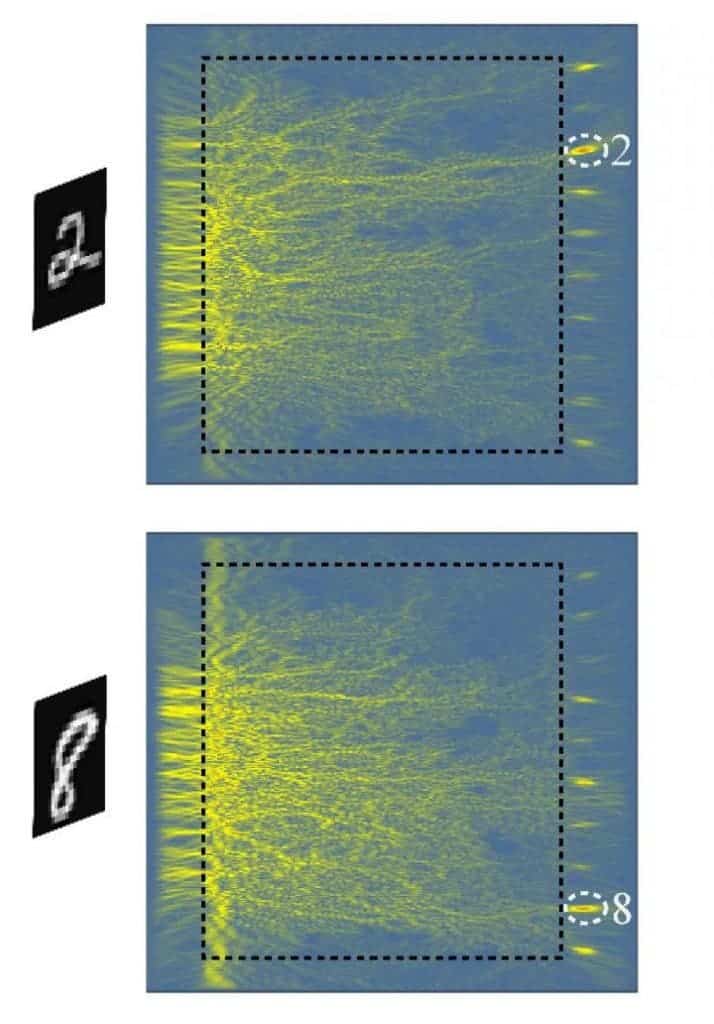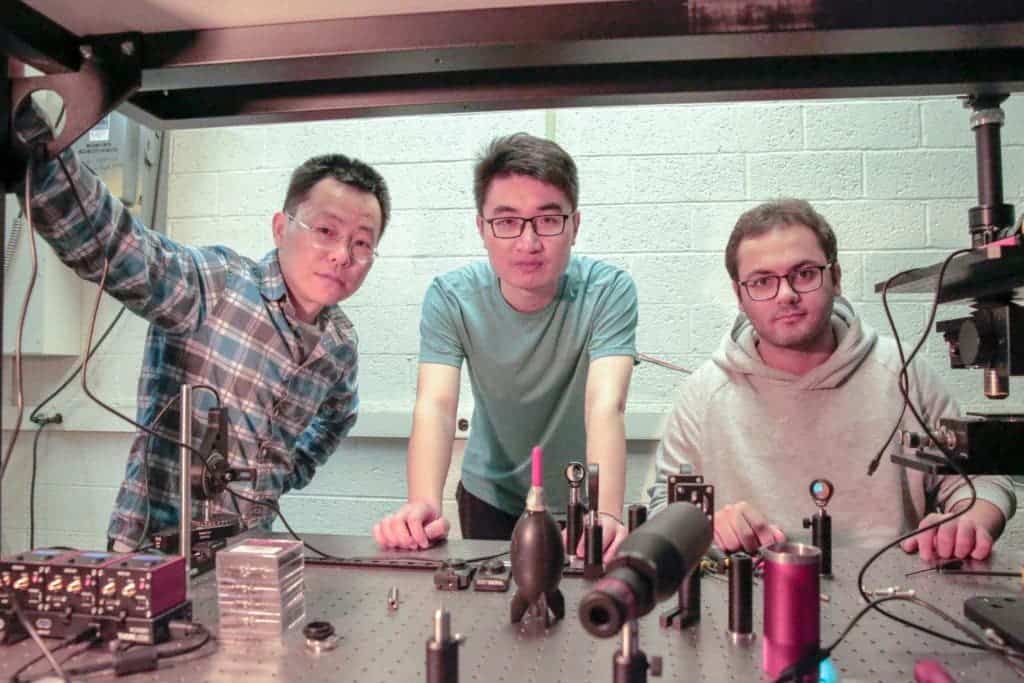
Many phones can now be unlocked with face ID, a technology that is the pinnacle of computer vision and artificial intelligence — but which also uses significant computing resources and battery life. Imagine a future, however, where the same function could be achieved with a single piece of glass that can recognize your face or other imagery without using any sensors or even power at all. Sounds like science fiction but a team of creative engineers at the University of Wisconsin-Madison has recently demonstrated such a “smart” glass.
In other words, researchers managed to embed artificial intelligence inside an inert object. The novel approach provides a low-tech alternative to traditional digital artificial vision.
The researchers led by Zongfu Yu, a professor of electrical and computer engineering, designed translucent glass with tiny bubbles and impurities embedded at strategic locations.
“We’re using optics to condense the normal setup of cameras, sensors and deep neural networks into a single piece of thin glass,” he said in a statement.
As a proof of concept, Yu and colleagues designed a glass that can identify handwritten numbers. Light reflected off an image of a number enters one end of the glass, and then focuses on one of nine spots on the side, each corresponding to individual digits. Even when a handwritten “3” was altered to become an “8”, this clever system was dynamic enough to recognize the new digit. How fast? As fast as the speed of light, the fastest thing there is.
“The fact that we were able to get this complex behavior with such a simple structure was really something,” says Erfan Khoram, a graduate student in Yu’s lab.
The system shines due to the fact that it is completely self-contained and all the “computational” machinery is embedded inside it. There is zero latency because there is no need to send information to the cloud for processing. There is also no need for electrical power.
“We could potentially use the glass as a biometric lock, tuned to recognize only one person’s face,” says Yu. “Once built, it would last forever without needing power or internet, meaning it could keep something safe for you even after thousands of years.”

According to the researchers, this is an example of analog artificial vision. Designing the glass was similar to machine-learning training processes used by artificial neural networks — except that the training was done on an analog material rather than digital information. The tweaking was performed by embedding air bubbles of different sizes and shapes, as well as light-absorbing materials like graphene, at specific locations inside the glass.
“We’re accustomed to digital computing, but this has broadened our view,” says Yu. “The wave dynamics of light propagation provide a new way to perform analog artificial neural computing”
In the future, the researchers plan to test their approach for more complex image recognition, such as facial recognition.
“The true power of this technology lies in its ability to handle much more complex classification tasks instantly without any energy consumption,” says Ming Yuan, a collaborator on the research and professor of statistics at Columbia University. “These tasks are the key to create artificial intelligence: to teach driverless cars to recognize a traffic signal, to enable voice control in consumer devices, among numerous other examples.”
“We’re always thinking about how we provide vision for machines in the future, and imagining application specific, mission-driven technologies.” says Yu. “This changes almost everything about how we design machine vision.”


